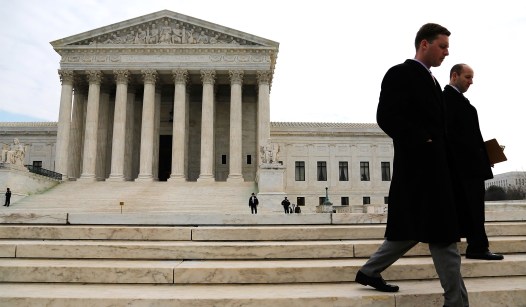Supreme Court Allows Trump Administration to Continue Federal Workforce Layoffs
The U.S. Supreme Court has allowed the Trump administration to proceed with mass layoffs in the federal workforce, marking a significant development in the ongoing legal battle over executive authority. In an emergency ruling, the court lifted a lower court’s decision that had previously blocked the planned reductions in force (RIFs) at several government agencies.
The decision came after President Donald Trump issued an executive order in February directing federal agencies to begin preparing for large-scale workforce reductions. The order instructed agencies to separate temporary employees and reemployed annuitants from federal service in areas likely to be affected by the RIFs. A joint memorandum from the Office of Management and Budget and the Office of Personnel Management supported the implementation of this directive.
In its two-page unsigned majority opinion, the Supreme Court stated that the government was likely to succeed in its argument that the executive order and related memorandum were lawful. The court also noted that other factors supporting the granting of a stay were satisfied. However, it clarified that it did not express any view on the legality of specific RIFs or reorganization plans developed under the executive order.
The initial challenge to the executive order came from labor unions, advocacy groups, and local governments, who filed lawsuits seeking to block the planned layoffs. Judge Susan Illston of the Federal District Court for the Northern District of California issued a two-week pause followed by a preliminary injunction that halted the government from proceeding with the RIFs. This decision was later upheld by the U.S. Court of Appeals for the Ninth Circuit.
Solicitor General D. John Sauer then took the case to the Supreme Court, arguing that the district court’s injunction interfered with the executive branch’s legal authority to plan and carry out RIFs. He claimed that the injunction caused confusion across more than a dozen federal agencies by halting numerous ongoing RIFs.
The respondents, however, argued that the president could not unilaterally initiate reorganization and reduction efforts without constitutional cooperation from Congress. Despite these concerns, the high court ruled in favor of the Trump administration.
Justice Ketanji Brown Jackson was the only justice to dissent, writing a 15-page opinion that warned the ruling would allow what she called an unprecedented and congressionally unsanctioned dismantling of the federal government. She argued that this could cause irreparable harm before courts can determine whether the president has the authority to take such actions.
Justice Sonia Sotomayor, in a one-paragraph concurring opinion, emphasized that the RIF plans themselves were not being reviewed by the court at this stage. She agreed with Justice Jackson that the president cannot restructure federal agencies in a way that contradicts congressional mandates. However, she noted that the executive order directed agencies to plan reorganizations and RIFs “consistent with applicable law.”
This ruling is temporary and outlines how the administration can proceed while legal challenges to Trump’s plan continue in lower courts. The decision highlights the complex balance between executive power and judicial oversight, as well as the broader implications for federal workforce management and legislative authority.







